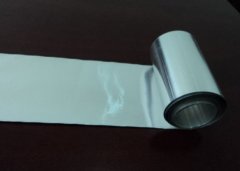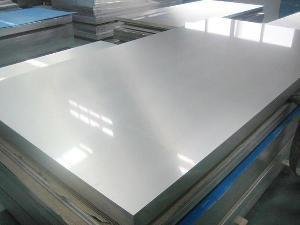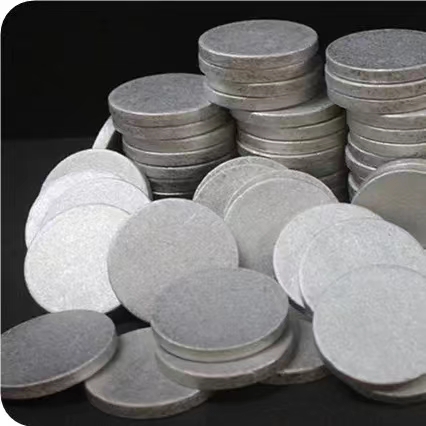You are here:
>
News
>
Development Status World aluminum cans
Development Status World aluminum cans
Beer and beverage metal cans have more than 70 years of history. The early 1930s, the United States has begun producing metal cans of beer, and these three-piece cans are made with galvanized iron, the upper conical tank top is the crown lids. Its gross appearance of glass not differ too much, so the initial glass bottle filling line is filling until the 1950s have a dedicated filling line. Lids in the mid-1950s turned into a planar shape in the 1960s and improved to an aluminum ring cover.
Aluminum beverage cans was first developed in the late 1950s appeared last century the early 1960s officially come out a two-piece DWI cans. Aluminum cans developing very rapidly, to this end of the century has been the annual consumption of more than 1800 million, the total amount of metal cans in the world (about 400 billion) on the maximum amount of a class. Consumption of aluminum used to manufacture aluminum cans equally rapid growth in 1963 is also near zero in 1997 reached 3.6 million tons, equivalent to 15% of the global total amount of all kinds of aluminum.
The United States is the largest producer and consumer of the world's aluminum beverage cans. Number of US aluminum use in 1984 more than 62 billion in 1987, more than 70 billion in 1988, more than 80 billion in 1990, more than 90 billion in 1994, more than 100 billion. Alcoa is mainly used for packaging beverage cans, such as beverage cans in 1992 amount to 92.8 billion, accounting for 95.7 billion beverage cans total of 97%, tin cans only 2.9 billion, accounting for 3%. 2001 American beer and soft drink cans in an amount of nearly 100 billion, of which 64 billion soft drink cans, beer cans 33 billion. Japan's aluminum output growth has been for many years, from 3 billion in 1985 to 5.5 billion in 1987, respectively, 8.1 billion in 1989, 10.2 billion in 1991, 11.8 billion in 1993, 1995 of 15.9 billion and 16.6 billion in 1997, mostly beer cans, as 9.5 billion in 1997, accounting for 57% carbonated beverage cans have 3.5 billion, accounting for 21%, other 3 billion beverage cans only 18%. Since the mid-1980s, the European beverage can market has been showing a steady growth trend. In 1990, consumption of beverage cans in Europe for the first time more than 20 billion, in 1993 amounted to 25 billion in 1995, a breakthrough 30 billion. 1996 decreased by 2%, from 32.2 billion last year was reduced to 31.6 billion. In 1997, the European beverage can market again returned to steady growth, the annual increase of 5%, total consumption rose to 33.5 billion, the highest level in history. Among them, a refreshing beverage cans 18.5 billion, up 5.1 percent over last year, beer 15 billion, an increase of 7 percent over the previous year. European beverage cans tin cans and aluminum cans each account for about half. Aluminum consumption in Latin America is relatively large, nearly 20 billion per year. Asia (excluding Japan) nor annual consumption of aluminum cans at 20 billion. Chinese consumption of aluminum cans are now more than 80 million annually.
For decades, aluminum cans manufacturing technology continues to improve. Aluminum weight has been greatly reduced, the early 1960s, per thousand aluminum cans (including cans and lids) weight up to 55 pounds (about 25 kilograms), the mid-70s dropped 44.8 pounds (25 kg), the late 1990s and reduced to 33 pounds (15 kilograms), has been reduced to 30 pounds or less, than 40 years ago to reduce by nearly half. 1975 to 1995 20 years, an increase of 35% the number one pound of aluminum cans produced (capacity of 12 ounces).
Lightweight aluminum cans cover the progress is obvious. Aluminum lid thickness 0.39 mm from the last century in the early 1960s to the 1970s decline of 0.36 mm, 1980 dropped to zero. 28 mm to 0.30 mm, 0.24 mm down to the mid-1980s. Diameter narrowed lids. Lids declining weight, the weight of 1974 thousand aluminum cans is 13 pounds, reduced to 12 pounds in 1980, 1984 was reduced to 11 pounds, it was reduced to 10 pounds in 1986, 1990 and 1992 were reduced to nine pounds and 8 pounds, 2002 reduced to 6.6 pounds. Can speed greatly improved by the 1970s the 650 ~ 1000cpm (only / per minute) were increased to 80 years of 1000 ~ 1750cpm and now 2000cpm more.
Many countries, especially developed countries, to scrap metal cans used after the recovery and use very seriously, metal cans recycling rate also continues to grow. For example, the US recycling rate of aluminum cans, as early as the 1980s had more than 50%, in 1990 63.6% in 1994 increased to 65.4% in 1997, 66.5% in 1999 down to 62.5% in 2000 62.1%. Japanese aluminum can recycling rate in 1990 to 43 per cent increase, respectively, in 1993 58% 1996 70% 1999 79% 2001 83%.
Aluminum beverage cans was first developed in the late 1950s appeared last century the early 1960s officially come out a two-piece DWI cans. Aluminum cans developing very rapidly, to this end of the century has been the annual consumption of more than 1800 million, the total amount of metal cans in the world (about 400 billion) on the maximum amount of a class. Consumption of aluminum used to manufacture aluminum cans equally rapid growth in 1963 is also near zero in 1997 reached 3.6 million tons, equivalent to 15% of the global total amount of all kinds of aluminum.
The United States is the largest producer and consumer of the world's aluminum beverage cans. Number of US aluminum use in 1984 more than 62 billion in 1987, more than 70 billion in 1988, more than 80 billion in 1990, more than 90 billion in 1994, more than 100 billion. Alcoa is mainly used for packaging beverage cans, such as beverage cans in 1992 amount to 92.8 billion, accounting for 95.7 billion beverage cans total of 97%, tin cans only 2.9 billion, accounting for 3%. 2001 American beer and soft drink cans in an amount of nearly 100 billion, of which 64 billion soft drink cans, beer cans 33 billion. Japan's aluminum output growth has been for many years, from 3 billion in 1985 to 5.5 billion in 1987, respectively, 8.1 billion in 1989, 10.2 billion in 1991, 11.8 billion in 1993, 1995 of 15.9 billion and 16.6 billion in 1997, mostly beer cans, as 9.5 billion in 1997, accounting for 57% carbonated beverage cans have 3.5 billion, accounting for 21%, other 3 billion beverage cans only 18%. Since the mid-1980s, the European beverage can market has been showing a steady growth trend. In 1990, consumption of beverage cans in Europe for the first time more than 20 billion, in 1993 amounted to 25 billion in 1995, a breakthrough 30 billion. 1996 decreased by 2%, from 32.2 billion last year was reduced to 31.6 billion. In 1997, the European beverage can market again returned to steady growth, the annual increase of 5%, total consumption rose to 33.5 billion, the highest level in history. Among them, a refreshing beverage cans 18.5 billion, up 5.1 percent over last year, beer 15 billion, an increase of 7 percent over the previous year. European beverage cans tin cans and aluminum cans each account for about half. Aluminum consumption in Latin America is relatively large, nearly 20 billion per year. Asia (excluding Japan) nor annual consumption of aluminum cans at 20 billion. Chinese consumption of aluminum cans are now more than 80 million annually.
For decades, aluminum cans manufacturing technology continues to improve. Aluminum weight has been greatly reduced, the early 1960s, per thousand aluminum cans (including cans and lids) weight up to 55 pounds (about 25 kilograms), the mid-70s dropped 44.8 pounds (25 kg), the late 1990s and reduced to 33 pounds (15 kilograms), has been reduced to 30 pounds or less, than 40 years ago to reduce by nearly half. 1975 to 1995 20 years, an increase of 35% the number one pound of aluminum cans produced (capacity of 12 ounces).
Lightweight aluminum cans cover the progress is obvious. Aluminum lid thickness 0.39 mm from the last century in the early 1960s to the 1970s decline of 0.36 mm, 1980 dropped to zero. 28 mm to 0.30 mm, 0.24 mm down to the mid-1980s. Diameter narrowed lids. Lids declining weight, the weight of 1974 thousand aluminum cans is 13 pounds, reduced to 12 pounds in 1980, 1984 was reduced to 11 pounds, it was reduced to 10 pounds in 1986, 1990 and 1992 were reduced to nine pounds and 8 pounds, 2002 reduced to 6.6 pounds. Can speed greatly improved by the 1970s the 650 ~ 1000cpm (only / per minute) were increased to 80 years of 1000 ~ 1750cpm and now 2000cpm more.
Many countries, especially developed countries, to scrap metal cans used after the recovery and use very seriously, metal cans recycling rate also continues to grow. For example, the US recycling rate of aluminum cans, as early as the 1980s had more than 50%, in 1990 63.6% in 1994 increased to 65.4% in 1997, 66.5% in 1999 down to 62.5% in 2000 62.1%. Japanese aluminum can recycling rate in 1990 to 43 per cent increase, respectively, in 1993 58% 1996 70% 1999 79% 2001 83%.



